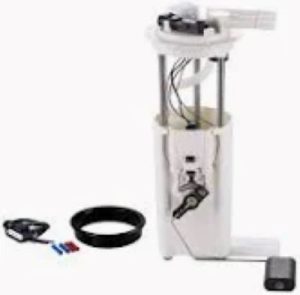Poor Fuel Pump This part is elemental for power, the engine needs the correct quantity of fuel at the right pressure to provide power. Fuel pump pressure is usually in the range of 40 to 60 psi, which allows enough atomization from fuel injectors and generates an accurate mixture required for combustion. If the pump does not work, then the engine cannot maintain power output most notably during acceleration or under load.
Uneven supply of fuel is one reason for loss of power. A pump that's on its way out may occasionally deliver fuel, but not in a steady stream; this can make the engine stumble or even stall when it's running near its peak, so don't ignore those signs. According to AAA, onethird of vehicle performance problems can be traced back to poor fuel delivery from a pump failure. These issues are most often felt whenever the driver is accelerating on the freeway or pulling heavy loads, and it usually becomes apparent when the engine is unable to meet higher demands.
Another reason is fuel contamination. Fuel contamination with dirt and debris that gets inside the pump clogs at its internal components, impeding fuel flow. According to the mechanics, 20% pump failures are due to polluted fuel. Free flowing exhaust allows the engine to make maximum power for a given displacement, while restricted flow chokes the engine to perform slowly and may also lead to backfires.

Power loss worsens in case of overheating. Fuel pumps depend on the fuel that surrounds them for cooling. Once the tank drops below 25%, it runs at a hotter temperature which increases the chance of failure. The National Highway Traffic Safety Administration (NHTSA) has been reported that vehicles with perpetual low levels of fuel face a 40% greater risk of pump overheating and eventual power loss.
One of the most high-profile examples involves a 2020 recall of more than 200,000 vehicles by a major automaker over defective fuel pumps. Sudden loss of power while driving, especially upon accelerating. Upon investigation, it was established that the pumps failed to hold the necessary pressure which resulted in engine stalling on at least some occasions.
With a gauge, test the pump pressure to confirm that it is functioning properly. If it is lower than the manufacturer-recommended range, the pump has failed and will need to be replaced ASAP. In short, replacing the fuel filter every 15,000 to 30,000 miles along with other scheduled maintenance dramatically reduces the chances of pump failure and power loss.
We ensured that the pump was replaced with a quality unit from Kemso Fuel Pumps to guarantee performance. Made for heavy usage, it maintains solid pressure to avoid failure from power.
To learn more and where to find dependable replacements, check out Fuel Pump. Tackling the issue before it gets to this point prevents costly repairs and provides a seamless driving experience that is also powerful.